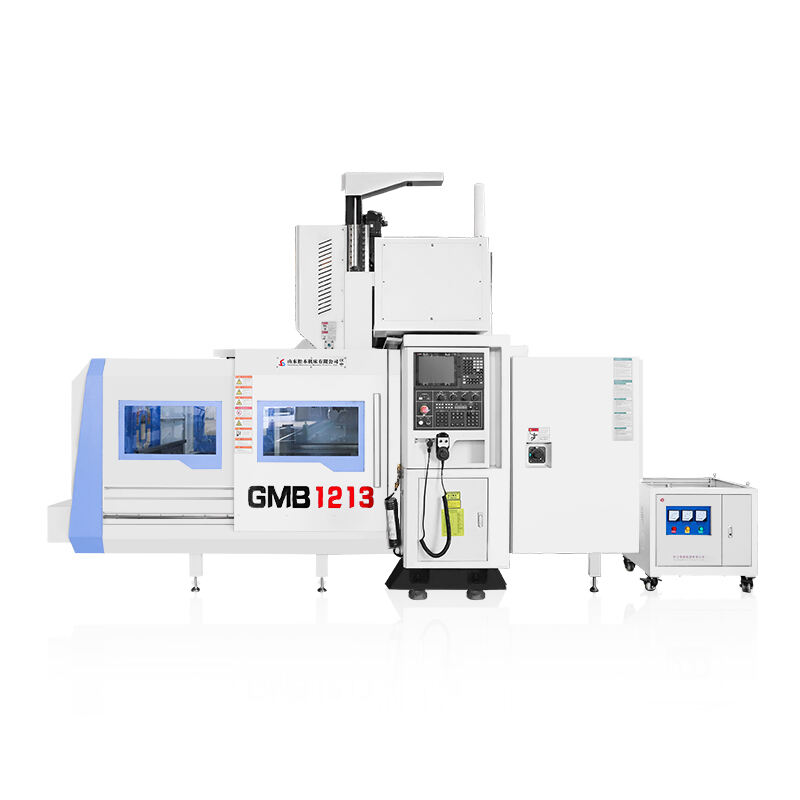Introduction
CNC Milling Machines have proven to be the backbone of precision manufacturing, providing a high degree and efficiency while fabricating intricate components. They have changed the game for machining as we know it enabling more complex designs with way tighter tolerances than ever possible before. We will discuss the basics, history, features, benefits, uses, programming, quality checks, drawbacks and future trends of CNC milling machine in this article.
Fundamentals of CNC Milling
CNC (Computer Numerical Control) milling is a subtraction manufacturing method that employs automated machine tools guided by computer to remove material from a workpiece. This is a process where a rotating cutting tool travels across multiple axes to cut away material and form the desired shape. The main part of a CNC wood router includes (1) the base, (2) the column, (3) the spindle and (4) Computer control system which control to work on CNC milling machine.
Reading Time: 4 minutes CNC Milling Technology: A Brief History
From manual milling to modern-age CNC machines, every stage in between is a technological advancement. Milling machines in the early days of machining were operated manually resulting latency and low accuracy. Along with the promotion TL of process CNC technology The 1960s advances in automation have resulted both in increasing processing accuracy and productivity. Modern CNC milling machines have advanced software, multi-axis capabilities, and high-speed spindles that make them one of the most versatile technologies in the manufacturing sector.
CNC Mill: bits, components and setup
A CNC milling machine can be broken down in to: the bed & saddle, which gives it stiffness and support; The column & knee, where the motor is located and where it traverses with limited motion; then we have your spindle & tool holder, that fastens anywhere it references to maintain an ice part, And finally, your unit and software or rather what makes this device tick. In unison, these elements come together to produce the sought after milling outcome within a high-resolution format.
Advantages of CNC Milling
Over conventional processes CNC milling is advantageous in huge ways. These movements are done by a machine, which is more repeatable, accurate and consistent than human to yield quality parts. They are capable of milling complex parts in a single operation that brings to better surface finish and reduced production time. CNC milling is one of the most common methods used by impacts due to lower labor time, less setup time and versatility options with a customization outcome.
Uses of CNC Milling Machine
Different industries use CNC milling machines for specific applications: aerospace (high-strength parts), automotive (engine components, body panels), and medical & dental (precision instruments, prosthetics). Similarly, mold and die making, prototyping and rapid production CNC milling machines also make extensive use of them.
Programming and Operation
One is G-code and M-code, used to control the cnc cutting process. CAD-CAM (computer-assisted manufacturing) software actively helps to shape tool paths and program the machine over its entire life cycle. CNC milling — usually another type of CNC machine that can be both manual or automated, where paths are simulated to look straight.
Metro-logy and quality control
While CNC milling is extremely accurate, it still must be inspected in order to generate correct parts, so additional inspection methods such as coordinate measuring machines (CMMs) and laser scanning can also factor into the process. CNC milling machines are frequently calibrated and serviced while tolerances and specifications are closely assessed with respect to the design specs.
Solution – Issues to be solved with CNC milling
In the research study, some challenges of CNC milling were calculated which include material handling, tool wear, machining complex geometries and energy consumption. It encompasses everything from improved work-holding through tool management systems, advanced programming methodologies and energy optimization technologies.
Future Trends in CNC Milling
The future of CNC milling will most likely proceed in the direction of further integration with robotics and automation, new materials, smart manufacturing leveraging the Internet of Things (IoT), and sustainability initiatives.
Conclusion
The introduction of CNC milling machines allowed for a completely new level of manufacturing precision to the industrial production, as well as innovation. CNC milling will likely just get more capable as technology advances, and more probably therefore kick on becoming a mainstay of precision manufacturing.
Table of Contents
- Introduction
- Fundamentals of CNC Milling
- Reading Time: 4 minutes CNC Milling Technology: A Brief History
- CNC Mill: bits, components and setup
- Advantages of CNC Milling
- Uses of CNC Milling Machine
- Programming and Operation
- Metro-logy and quality control
- Solution – Issues to be solved with CNC milling
- Future Trends in CNC Milling
- Conclusion

